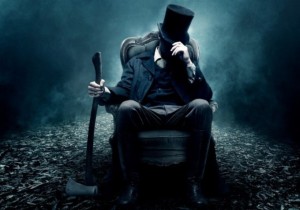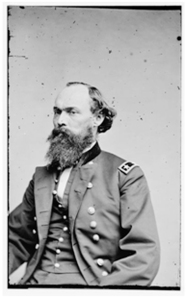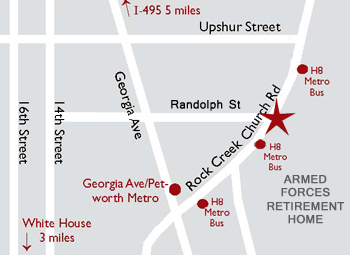 By Catherine Clinton
By Catherine Clinton
My obsession with action adventure films and my status as a Lincoln scholar, I decided, would make me a perfect candidate to enjoy Abraham Lincoln: Vampire Hunter.
The fractional truth — a concept Lincoln alludes to in the film’s voiceover — can become a dangerous thing, but it also allows for complex, entertaining eccentricities. Especially in this souped-up digital age, it’s nice to have a nod to the past: like the animated television series Clone High (2002) as the teenaged Lincoln struggles with his rival JFK for the attentions of Cleopatra, and more recently the 2010 Drunk History episode on YouTube with Will Ferrell and Don Cheadle. I had my heart set on loving this new high concept mash-up of the slasher-horror with a true red, white and blue biopic. Yet I was somewhat disappointed, especially as a fan of the book.
I found Seth Graham-Smith’s vampire hunter volume an engaging tongue-in-cheek novel cleverly exploiting Lincoln’s mythic status, revisionist views on race and slavery, not to mention the current craze for vampires. For Lincolnistas the volume presents a parlor game of catching the errors or sorting out the real from fake quotes. The film is even more mind blowing, and for the uninitiated, a fairly unbelievable introduction. But from his law partner William Herndon forward, Lincoln has been a commodity — thus liberties will be taken and outrageous claims made. It would’ve been nicer for Graham-Smith to have been more faithful to his own text with his screenplay adaptation, but as any member of the Screenwriter’s Guild knows, being faithful to the text is a fantasy no producer will buy.
Aficionados of horror films revel in the cheesy comfort of the fantastic directly competing with the familiar which produces hairs rising on the back of the neck. The book and film both raise a series of improbable questions, even if you believe in these fanged creatures of the night.
Like what if Lincoln’s mother died at the hands of some dastardly vampire rather than the milk sickness to which her death has been attributed for a century and a half? What if Abraham Lincoln had used his skills as an axman to kill these monsters in a campaign of just revenge? (But the film seems to miss a trick to not have him whittle some stakes!) What if slaves shipped downriver are being consumed literally, rather than just being worked to death in the fields?
But questions and dialogue aside, this is a dazzling spectacle with epic and operatic features.
The balletic slo-mo special effects of the strapping railsplitter being trained as a vampire hunter attract a special crowd of filmgoers; not just the fans of Tim Burton (producer) or Timur Bekmametov (director, whose 2008 Wanted, was a critical and box-office hit), but also legions within the newly emerging youth market seeking 3-D action adventure. Viewers get a screen soaked in blood and irony. My favorite cynicism was the vampire leader Adam’s plea that his people be allowed their own nation. Thus paving the way for a sequel: Vampire Nation — back to the “what if the Confederates had won” parlor game of the Civil War centennial era!
An appealing contemporary “what if” is posed with slavery in league with the darkest of horrors, vampirism. Bondage is portrayed with striking imagery; gore and bloodlust dominate in scenes where slavery appears, with the tip of the lash extending itself 3D nearly to the viewer’s own goose-bumped flesh. Most weirdly apt within this sectional fantasia: Jefferson Davis calling on Adam for military assistance from vampire troops! How the Lincolns plot and prevail to defeat Confederate vampires at Gettysburg forms the movie’s dramatic and sensational climax.
Hats off to the sexy youthful actors who provide viewers with more than just pretty faces. Dominic Cooper’s Henry–a man with a secret, who’s also a man with a mission–provides an interesting foil for the young man from Pigeon Creek. This tension between means, desires and a higher morality has a spiritual dimension which at times lifts the script out of its blood-soaked, grimy depths. But the higher ground is too seldom sought and even more rarely reached.
At times the continuity coordinator seems to have lost the thread – as do some of the viewers – but what the hell was Harrison Ford trying to find/accused of/ running from in The Fugitive? Thus often it’s not about the plot — and in this film, the moralistic streak for Lincoln comes shining through, manufactured by 150 years of scholarly hagiography, iconic cultural motifs, and just plain pop fiction. Babraham– as he has been affectionately labeled–comes off as an “aw shucks” superhuman figure in Bakmametov’s twisted tribute.
The filmmakers demonize racism, championing the heroics of abolitionism, giving Lincoln an African-American ally to fight bloodsucking bats on a train! At least the auteurs have given this central black character (William Johnson) agency, as well as the name of an African-American servant who accompanied the Lincolns from Springfield to Washington. Anthony Mackie provides a charismatic performance, which detracts from his role in plot absurdity. Harriet Tubman is also provided a cameo–in yet another portrait with 99% inaccuracy (similar to Stephen Douglas & Joshua Speed). Yet Tubman’s genuine one percent also triumphs as a plot device–power to the Underground Railroad and who has the final taste of victory and freedom.
Lincoln’s life and legendary status makes him a perfect star–to promote his own destiny, as he clearly does in this offbeat film epic. Benjamin Walker (so effective on Broadway in the role of Andrew Jackson in the musical “Bloody Bloody Andrew Jackson” that he may want to specialize in playing Presidents!) is relatively unknown to film audiences– which gives him an advantage. Who is this, if not our man Lincoln?
The general public’s ignorance about Mary Lincoln– played by the fetching Mary Elizabeth Winstead, allows viewers to shoehorn the Lincoln-Todd romance into a formulaic cliché about boy meeting girl. The writer and director throw in enough authentic emotive touches to create chemistry on screen. But I recognize that only Mary Lincoln biographers will be satisfied by this saccharine rendition of Lincoln’s romance and marriage. And even I wouldn’t try to sell an audience on such an heroic Mrs. Lincoln…who leans toward anti-slavery and braves the open road at night with a black woman. The audience is roused nearly to applause when Mary avenges her child’s death, and puts an end to the phantasmagoric creature played by Erin Wasson–a female vampire with such slither and style that she conjures up Nicole Kidman in Cold Mountain crossed with Catwoman. Although most cinematic vampires have been men–and the sexualized undertones are far from subtle in these portraits–perhaps the most effective vampire within this saga is the enigmatic Vadoma–who struts and connives until she meets her match (no spoilers). Her voracious demonization of womanhood harks back to Philip Burne- Jones’ painting of a female leaning over a supine man, which scandalized London when exhibited in the 1890s. In a film dominated by male fantasy, women do not fare as poorly as your average Hollywood vehicle.
When Mary, in a witch-like fury, pummels her husband’s chest angrily after the death of their son, Willie, Graham-Smith may or may not be aware of the historical debate surrounding Abe’s marriage. One prominent Lincoln historian has labeled him an “abused spouse,” claiming Abraham was a victim of Mary’s domestic violence. In any case, intellectual malapropos abound and overshadow the earnestness with which these filmmakers pursue their political message about Lincoln’s “magical properties.” But this nevertheless may work magic globally, as Lincoln the Vampire Hunter topped the charts during its opening summer weekend in the U.K.
And by the film’s end the weight of the evils of vampires, not to mention his secret life as a vampire hunter, mark Lincoln’s face and seal his fate. Anything that awakens curiosity about the Civil War during this sesquicentennial era must be applauded, even if we wince through fiction and pop projects. My only reservation is if the Vampire Hunter image spawns other less intentional horror depictions; with the announcement of a documentary adaptation of Bill O’Reilly’s Killing Lincoln, I shudder. But clearly, Americans hunger for Lincoln, and filmmakers will slake this thirst for a new generation, as well as that of their parents and grandparents. Lincoln’s star power goes 3D, vampires and all!
**
Catherine Clinton holds a chair in U.S. history at Queen’s University Belfast and
is the author of Mrs. Lincoln: A Life (2009) and Harriet Tubman: The Road to
Freedom (2004). She serves as a member of President Lincoln’s Cottage Scholarly Advisor Group.





